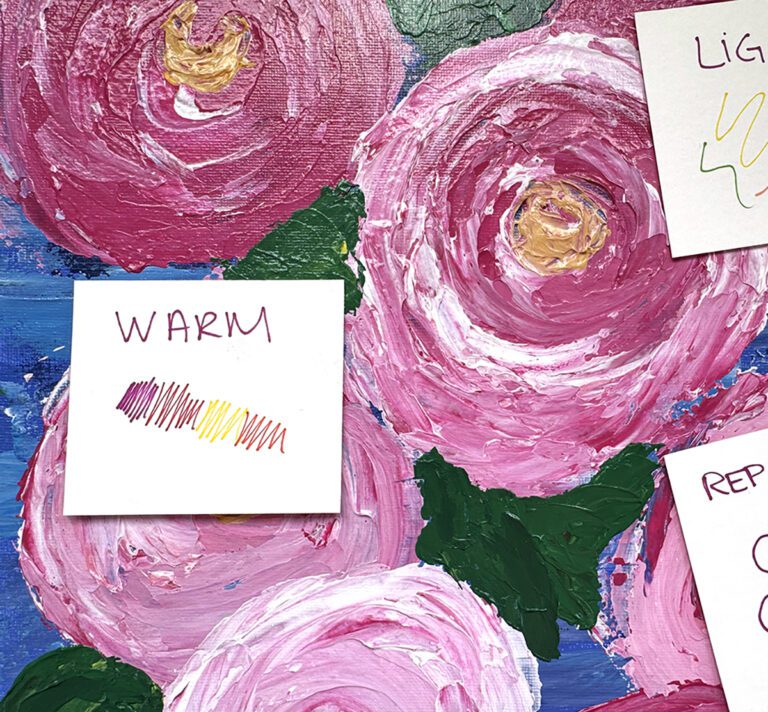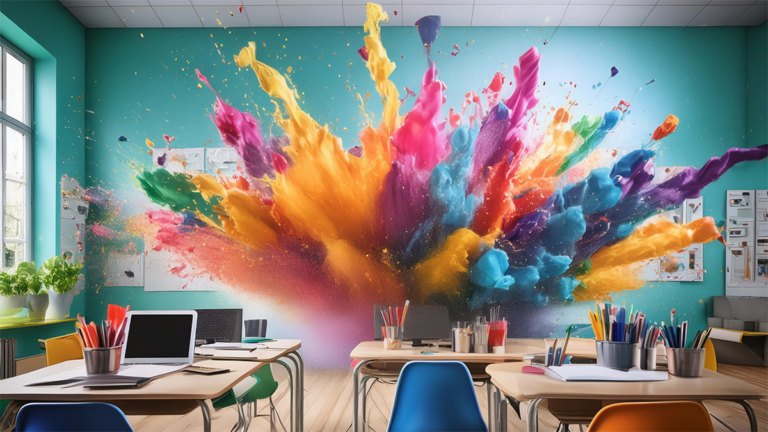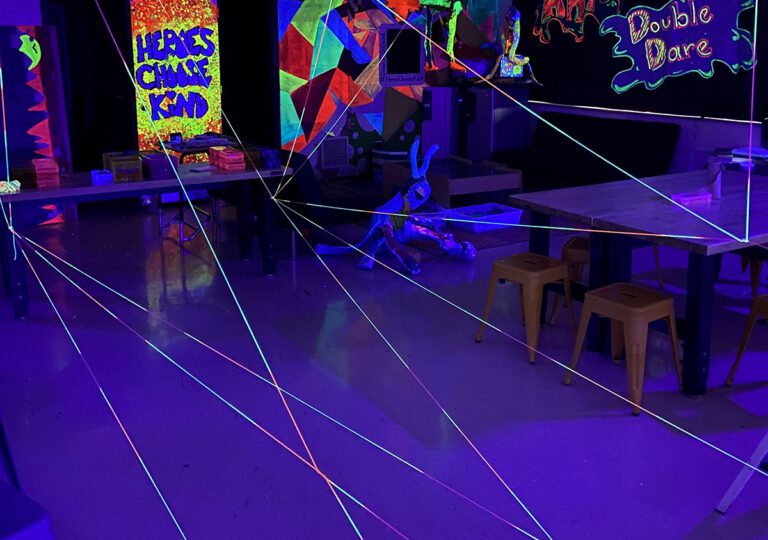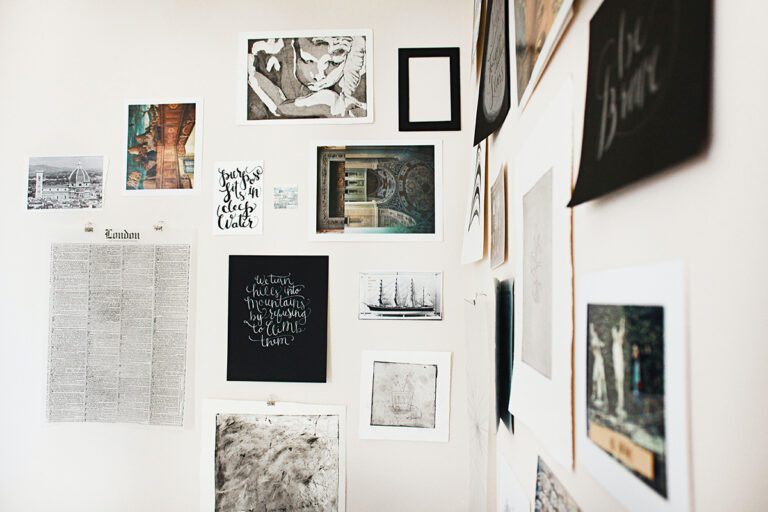Creating a portfolio is one of the most meaningful ways to assess learning. The idea of building and assessing a portfolio for each student feels daunting, but it doesn’t have to be. Not only do you get to see the growth of a student over time, but they do, too.
What is a growth portfolio?
Students often think of a portfolio as a body of their best, completed works. Most students don’t even build a portfolio until they are ready to apply for college. A growth portfolio, however, is a little different. This type of portfolio contains a little bit of everything throughout your student’s class time with you. Instead of only showing off their finished artwork, students document and present artifacts to demonstrate their learning over time. While these portfolios sometimes feel like additional work, growth portfolios have many benefits that make them an invaluable part of the artistic process.
Growth portfolios…
- Demonstrate clear evidence of learning
- Build student confidence
- Collect visible data
- Monitor students’ needs
- Support literacy goals
- Celebrate progress
What does a growth portfolio look like?
Growth portfolios are a great tool to assess learning and directly align with the National Visual Arts Standards. Students as young as kindergarten can curate their work to create a meaningful portfolio.
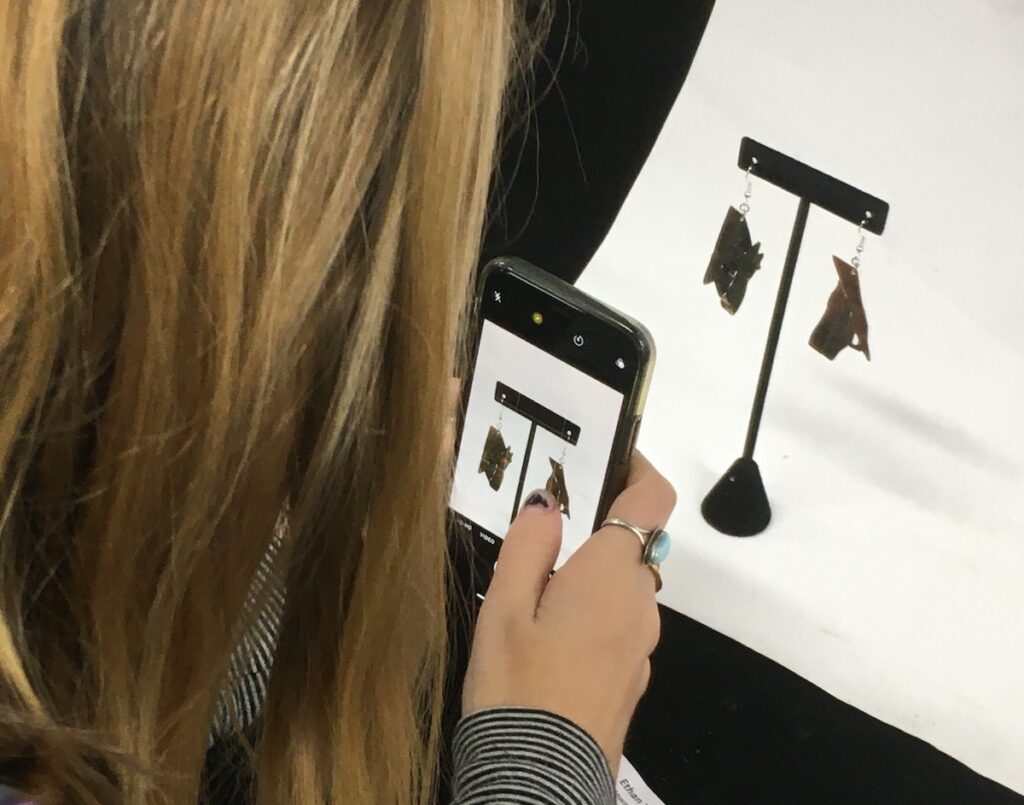
Just as you would teach media skills through modeling and practice, students also need to learn how to document their process, curate important evidence, and present their final work. Students might take time to collect their final artworks, some planning sketches, and maybe a written statement in the younger years. As the years progress, students need to be taught how to take quality photos of their work and how to choose the best evidence of work to share.
Digital Portfolios and So Much More . . . (Ep. 112)
Throughout middle and early high school, expose students to different ways in which artists document their work. Video and audio recordings, visual annotations, and various types of written examples are all valid forms of documentation. High school students continue to develop their literacy and reflection skills throughout multiple classes and levels. By the end of their high school career, advanced students will be able to curate their best works along with their most clear evidence of process, create an artist statement for their entire body of work, and defend their choices.
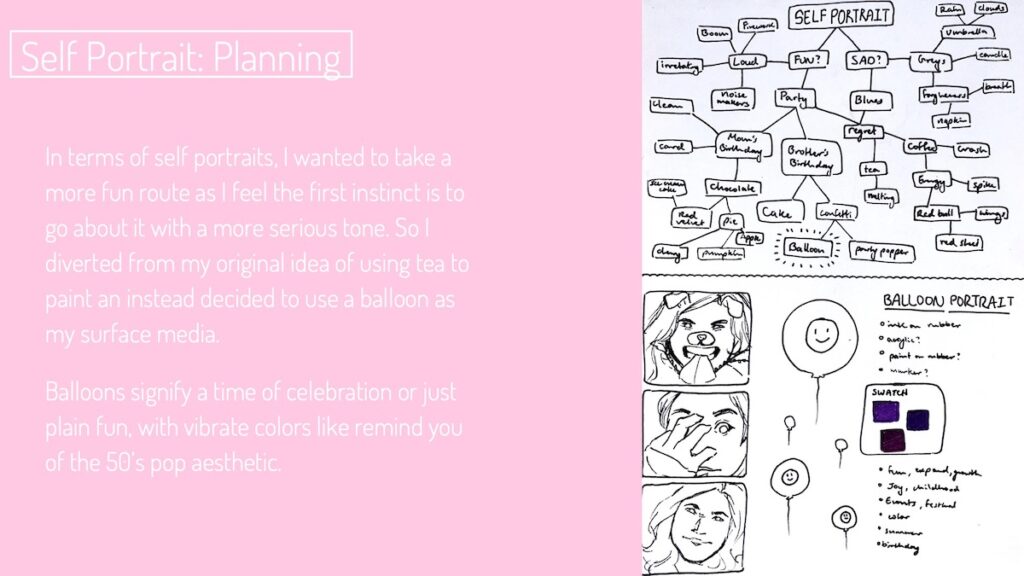
How can students build a digital growth portfolio?
Step 1: Choose your platform.
Digital portfolios have become the new norm. With so many different digital platforms at our disposal, where do you start? Some are more user-friendly than others, some allow you to download and save, and some might not be accessible through your district. Try a few out before introducing them to students so you can find the right fit. Some teacher and student favorites are:
- Adobe Sparks Site
- Google Sites
- WordPress or Blogger
- Google Drive Folder
- Google Slides
- Sway
- Seesaw
Step 2: Decide on essential content.
As students begin, provide a framework or template for what evidence they should collect and present. Later in their career, students can determine which artifacts best represent their learning and why. Here are some ideas of what to include as essential content:
- Practice: Including key foundational concepts such as composition, paper weaving, shading a sphere, or photographing leading lines is a great way to check for understanding. Students can include a quick exercise or identify the concept in more developed artwork.
- Finished Artwork: Teach students how to photograph their work in good lighting with appropriate angles. Once students have a quality image of their work, teach them how to display it on their digital platform. This might include a title, media, dimensions, a possible artist statement and layout, and ease of reading.
- Process: Not only should students show off their final product, but also how they got there. Students can provide artifacts throughout their process to make their thinking visible. Here are some ideas of what types of artifacts students can include.
- Planning: Ideation including lists, mind mapping, word webs, visual journaling, developing ideas through sketches and maquettes, and artist research are all important parts of the planning process worth documenting.
- Artmaking: Taking note of technique practice, media exploration, photographs of daily progress, photos or videos of problem-solving and revision will help showcase an artist’s process.
- Critique and Refinement: Questions students asked for specific peer feedback, annotations on how they refined based on this feedback, further development, and thinking revision offer opportunities for reflection.
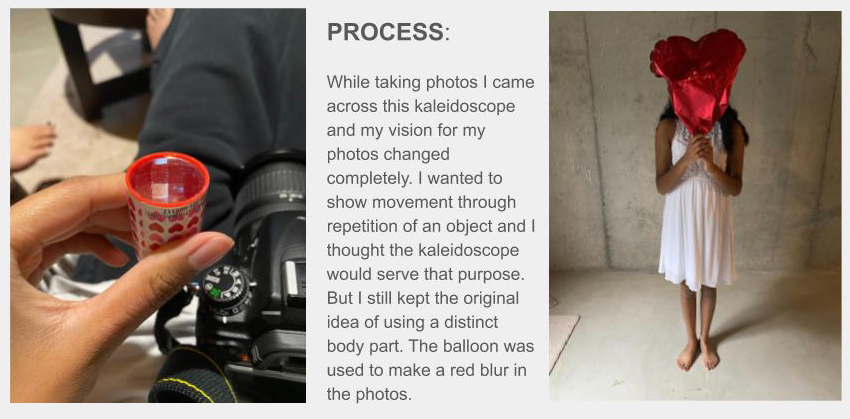
Step 3: Reflect.
Students should reflect throughout their entire process; this is an opportunity to ask targeted questions at the end of an artwork. Reflection questions might include:
- What successes or ah-ha moments did you have?
- How did you take risks in your process?
- What challenges did you face, and how did you overcome those obstacles?
- If you could do this over again, what would you do differently?
- How will you take what you learned from this work into how you approach your next artwork?
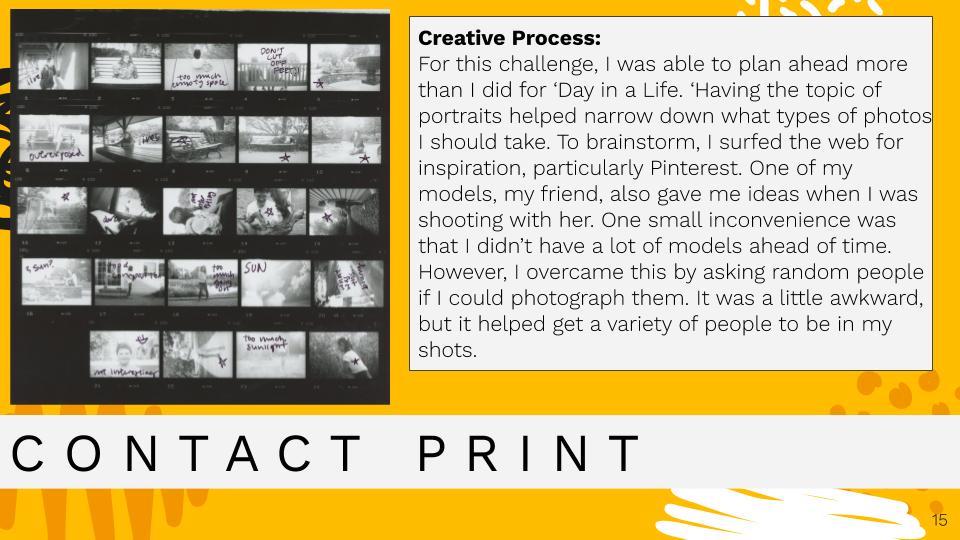
How do I assess a growth portfolio?
Assessing growth might seem tricky. Decide what key concepts you value and how important each of those are to assess. If you value risk-taking and exploration in your art room, for example, then make sure it’s part of your rubric. Teach students how to identify what risk-taking and exploration look like, so they can collect and include that evidence. In a growth portfolio, you are not assessing each artwork, but rather the learning and development as a whole.
Key concepts for a growth portfolio rubric often include:
- Risk-taking, exploration
- Creative problem-solving
- Development of technical skills
- Concept and visual meaning-making
- Reflection
- Foundational concepts (Elements of Art and the Principles of Design)
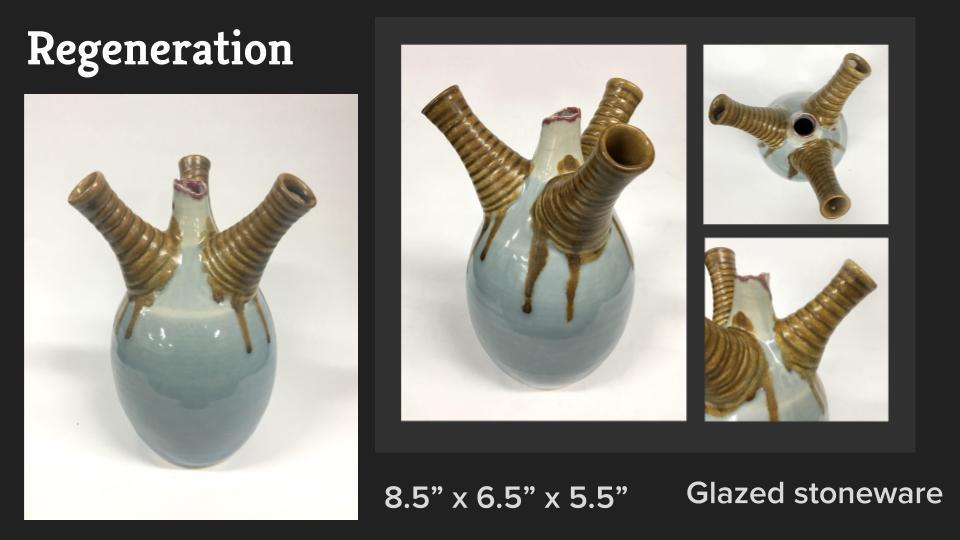
Students can also identify what growth looks like to them. This is a key component to reviewing work over a long period of time (quarter, semester, year, etc.). Students curate only a few artifacts from all of their documented evidence that best speaks to their growth in their later high school years. Students’ insights will help you see pieces you might have missed otherwise.
Consider questions like:
- What trends do I see both in technical and conceptual growth?
- What continues to be challenging; how have I overcome my obstacles?
- What areas could I continue to develop?
- What have I learned from this class that I will take with me into the next course level, other classes, and in my life in general?
Combining your rubric expectations alongside your student’s voices is an exciting way to assess. Students will take ownership of their work from start to finish and bask in their own growth. Help your students visualize their learning and celebrate their achievements.
However you decide to assemble a portfolio, don’t wait until the last week of school. Help students build their portfolios over time with routine practice and checkpoints. By the time students complete the semester, they will have an amazing portfolio of both process and product. How can you not celebrate that visual growth?
Do your students create a growth portfolio? If not, what’s been an obstacle to starting?
What are your favorite digital platforms for portfolio creation?
What are your assessment criteria for a growth portfolio?
Magazine articles and podcasts are opinions of professional education contributors and do not necessarily represent the position of the Art of Education University (AOEU) or its academic offerings. Contributors use terms in the way they are most often talked about in the scope of their educational experiences.

